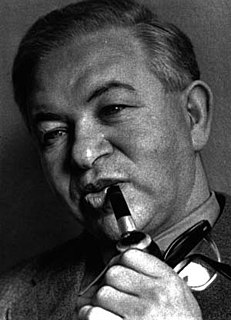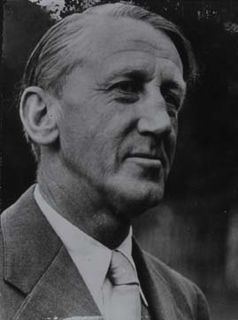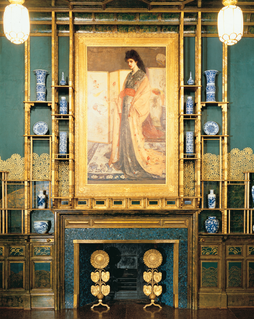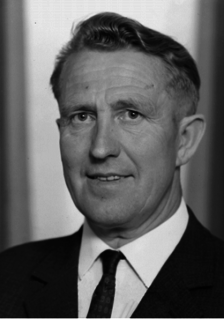
Arne Emil Jacobsen, Hon. FAIA was a Danish architect and designer. He is remembered for his contribution to architectural Functionalism as well as for the worldwide success he enjoyed with simple but effective chair designs.

Bolesławiec(listen) is a town located on the Bóbr River in the Lower Silesian Voivodeship in southwestern Poland, with 40,837 inhabitants (2006). It is the administrative seat of Bolesławiec County, and of Gmina Bolesławiec. Bolesławiec was previously in Jelenia Góra Voivodeship (1975–1998).
Poul Kjærholm was a Danish designer.

Hans Jørgensen Wegner was a world-renowned iconic Danish furniture designer. His high quality and thoughtful work, along with a concerted effort from several of his manufacturers, contributed to the international popularity of mid-century Danish design. His style is often described as Organic Functionality, a modernist school with emphasis on functionality. This school of thought arose primarily in Scandinavian countries with contributions by Poul Henningsen, Alvar Aalto, and Arne Jacobsen. In his lifetime he designed over 500 different chairs, over 100 of which were put into mass production and many of which have become recognizable design icons.

Poul Henningsen was a Danish author, critic, architect, and designer, who was one of the leading figures of the cultural life of Denmark between the World Wars. In Denmark, he often is referred to, simply, as PH. His novel designs are featured in many museums. International interest in his work was revived during the 1960s.

Kaare Klint was a Danish architect and furniture designer, known as the father of modern Danish furniture design. Style was epitomized by clean, pure lines, use of the best materials of his time and superb craftsmanship.

The Anglo-Japanese style developed in the period from approximately 1851 to 1900, when a new appreciation for Japanese design and culture affected the art, especially the decorative art, and architecture of England. The first use of the term "Anglo-Japanese" occurs in 1851. The wider interest in Eastern or Oriental design and culture is regarded as a characteristic of the Aesthetic Movement during the same period.

Pottery was produced in enormous quantities in ancient Rome, mostly for utilitarian purposes. It is found all over the former Roman Empire and beyond. Monte Testaccio is a huge waste mound in Rome made almost entirely of broken amphorae used for transporting and storing liquids and other products – in this case probably mostly Spanish olive oil, which was landed nearby, and was the main fuel for lighting, as well as its use in the kitchen and washing in the baths.

Bing & Grøndahl was a Danish porcelain manufacturer founded in 1853 by the sculptor Frederik Vilhelm Grøndahl and merchant brothers Meyer Hermann Bing and Jacob Herman Bing. The trademark backstamp for Bing & Grøndahl (B&G) porcelains is the three towers derived from the Coat of Arms of Copenhagen. The company's Seagull dinnerware series became known as the "National Service of Denmark" in the 1950s when it was found in one tenth of all Danish households. In 1987 the company merged with its primary competitor, the Royal Porcelain Factory under the name Royal Copenhagen.

Danish modern is a style of minimalist furniture and housewares from Denmark associated with the Danish design movement. In the 1920s, Kaare Klint embraced the principles of Bauhaus modernism in furniture design, creating clean, pure lines based on an understanding of classical furniture craftsmanship coupled with careful research into materials, proportions and the requirements of the human body. With designers such as Arne Jacobsen and Hans Wegner and associated cabinetmakers, Danish furniture thrived from the 1940s through the 1960s. Adopting mass-production techniques and concentrating on form rather than just function, Finn Juhl contributed to the style's success. Danish housewares adopting a similar minimalist design such as cutlery and trays of teak and stainless steel and dinnerware such as those produced in Denmark for Dansk in its early years, expanded the Danish modern aesthetic beyond furniture.
Fritz Hansen, also known as Republic of Fritz Hansen, is a Danish furniture design company. Designers who have worked for Fritz Hansen include Arne Jacobsen (1902–1971), Poul Kjærholm (1929–1980), Hans J. Wegner (1914–2007) and Piet Hein (1905–1996). Fritz Hansen also collaborates with contemporary furniture architects including Hiromichi Konno, Cecilie Manz, and Kasper Salto.

Mogens Lassen was a Modernist Danish architect and designer, working within the idiom of the International Style. He mainly designed residential buildings, both in the form of single-family houses and apartment blocks. He was the brother of Flemming Lassen, also an architect.
Rigmor Andersen was a versatile Danish designer, educator and author. Above all she is remembered for maintaining the traditions of Kaare Klint's furniture school at the Royal Danish Academy of Fine Arts.
Hans Olsen (1919–1992) was a Danish furniture designer who created a number of items in his own distinctive style.

Poul M. Volther was a Danish furniture designer who is remembered above all for his iconic Corona Chair.
Le Klint is a Danish light furniture company known for its lamp shades made out of pleated and folded paper.
Bodil Kjær is a Danish architect, furniture designer, professor and researcher, who has specialized in interior design and city planning. Today she is recognized above all for the flexible series of office furniture she designed in the 1960s.

Louis Poulsen is a Danish lighting manufacturer that was founded in 1874. Louis Poulsen Lighting is represented by subsidiaries, distribution offices and agents around the world. Their key sales regions are Scandinavia, Europe, Japan and United States. Some of Louis Poulsen's best designers were Arne Jacobsen and Poul Henningsen. Some of their signature products are the PH-Lamps.

Olav Haug was a Norwegian furniture designer and master craftsman whose furniture designs demonstrated a deep understanding of woodwork and quality craftsmanship. His designs won him awards and production orders from numerous governmental and publics institutions, yet he remains a relatively unknown figure in the Norwegian mid-century design landscape.

Ceramic art is art made from ceramic materials, including clay. It may take forms including artistic pottery, including tableware, tiles, figurines and other sculpture. Ceramic art is one of the arts, particularly the visual arts. Of these, it is one of the plastic arts. While some ceramics are considered fine art, as pottery or sculpture, some are considered to be decorative, industrial or applied art objects. Ceramics may also be considered artefacts in archaeology. Ceramic art can be made by one person or by a group of people. In a pottery or ceramic factory, a group of people design, manufacture and decorate the art ware. Products from a pottery are sometimes referred to as "art pottery". In a one-person pottery studio, ceramists or potters produce studio pottery.














